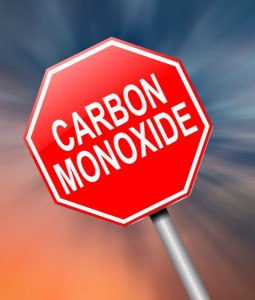
Being ignorant can compromise the health and safety of you and your loved ones. Know more about carbon monoxide!
Known as the “silent killer,” over 200 people across the country die every year from carbon monoxide poisoning, according to the Chimney Safety Institute of America (CSIA). In addition, 10,000 cases of carbon monoxide poisoning-related illnesses are reported every year. It is for this reason that it is very important to be aware of how carbon monoxide can leak into your home, what the symptoms of carbon monoxide are, and what you can do to prevent any problems carbon monoxide may cause. The CSIA-certified technicians at Pristine Sweeps are familiar with solving carbon monoxide intrusion problems, and we want to share some frequently asked questions and answers about carbon monoxide poisoning.
How does carbon monoxide enter my home?
Problems with venting the toxic gases produced by your heating system from your home are the main cause of carbon monoxide poisoning, according to the CSIA. Houses today are more airtight because homeowners are more conscious of sealing windows, doors, and other areas where air can enter. This means less fresh air is able to enter the home, and, consequently, there are fewer pathways through which toxic air can escape. When furnaces and boilers do not have the requisite amount of oxygen necessary to burn fuel completely, carbon monoxide is produced. Other problems can enable carbon monoxide to enter your home as well—deteriorating flue liners, soot and creosote build-up, debris clogging the chimney passageway, and animal or bird nests obstructing the chimney flue.
I had a new gas fireplace insert installed in my old chimney. Do I still need to worry about carbon monoxide entering my home?
Yes! Although the new gas and oil appliances are extremely energy-efficient, when these heating systems are vented into existing chimney flues, they often do not perform at their optimum level and create conditions that can allow toxic gases like carbon monoxide to enter homes more easily.
What are the symptoms of carbon monoxide poisoning?
Unfortunately, the symptoms of low-level carbon monoxide poisoning are so similar to the common cold and the flu, it easily gets misdiagnosed, thereby causing the sufferers continue to breathe in the carbon monoxide, which leads to a worsening of their symptoms. The symptoms are headaches, nausea, dizziness, and fatigue. This illness usually is not diagnosed until people develop serious health issues like permanent, subtle damage to the brain, heart, and other organs and tissues. For this reason, you should be persistent with your physician if you are suffering from chronic flu-like symptoms. Ask to be tested for carbon monoxide exposure if necessary. You will suffer less damage the earlier it is detected.
How do I prevent carbon monoxide from entering my home?
The most important step you can take to prevent this toxic gas from leaking into your home is keeping up with regular maintenance of your fireplace and chimney. Scheduling an annual chimney sweep and inspection is the best way to check out your chimney system. The chimney sweeps at Pristine Sweeps know exactly where to look and how to fix any problems that could be causing toxic gases to enter your home instead of exiting through your chimney. The importance of having your chimney cleaned annually to combat carbon monoxide poisoning is not only stressed by the CSIA, but also by the US Consumer Product Safety Commission, the US Environmental Protection Agency, the National Fire Protection Association, and the American Lung Association.
If you have more questions about carbon monoxide, contact Pristine Sweeps to ask our experienced and qualified staff. We would be happy to answer any questions you may have.
